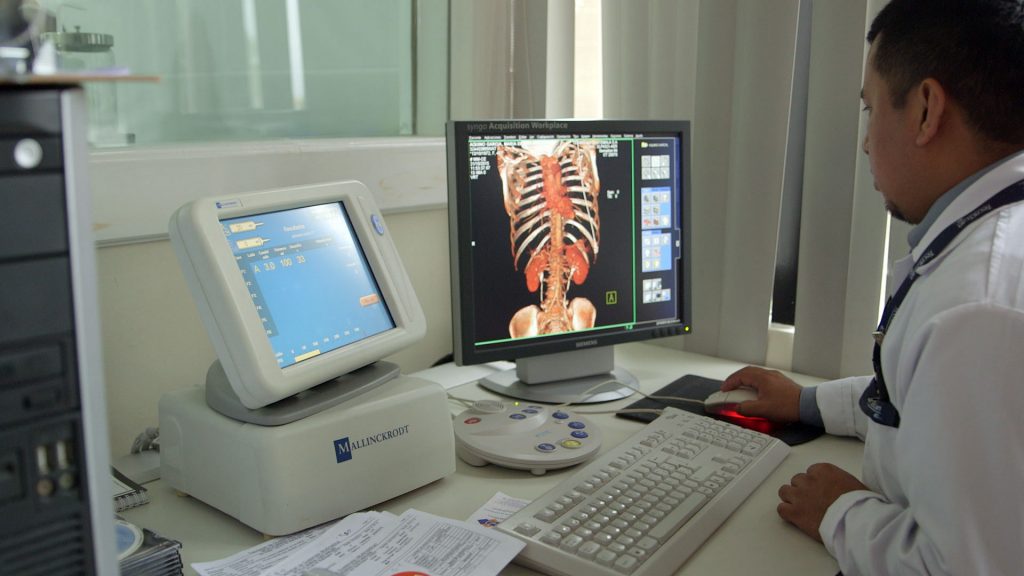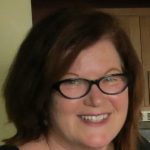
They dreamed, created and developed using Microsoft’s more open and flexible developer platform
Ernesto Mena, from a family of physicians in Guatemala, saw an opportunity to help doctors spend more time with patients. Marisa Cicero and Amanda Highhell, perinatal social workers in Canada, wanted to create a simple way to encourage homeless pregnant women to stay healthy during their pregnancies. Lama Nachman and her Intel research colleagues were fighting the clock to come up with a way to enable renowned physicist Dr. Stephen Hawking to continue to communicate using a computer.
All of them wanted to save and improve lives. All of them worked with developers who use Microsoft’s increasingly open and flexible developer platform. It enables developers to target any device or platform, including iOS, Android, Linux or Windows, and to take advantage of the power of the cloud.
Their stories, and the stories of others who found success by using these collaborative tools, are being shared this week at Connect (); // 2015, Microsoft’s premier fall developer event, streamed live and for free from New York City to developers around the world.
Ernesto Mena’s great-grandfather was a doctor in Guatemala, and his father is a doctor who studied at a U.S. university. After graduating from med school, his father was offered “some very good jobs” in the U.S., but wanted to bring back what he learned to his native land. He was the first doctor in Guatemala to offer CT scans and MRIs, Mena says.
“He wanted to do something for the country,” Mena says of his father. “It was a big challenge, because there was none of this technology here” then. Mena, too, wanted to use technology help patients.
Enter developer Maynor Gamarro. He says he thinks of himself as a dreamer and as a “creator of solutions using software.” His dream, along with Mena’s, was to “help deliver better medical care to the people of Guatemala,” Gamarro says.
Together the two men founded Nube Medica (“Nube” means “cloud” in Spanish) in 2013, and Microsoft BizSpark supported their startup with resources and funding.
With their small team, they developed MediCloud.me. It’s a free software as a service solution that uses a variety of open source technologies on Azure, and it helps doctors communicate with one another, as well as manage patient appointments, electronic health records, financial management items and administrative procedures. The project began through Microsoft’s BizSpark program, then the team built the solution with Visual Studio and ASP.NET, while using Microsoft’s Visual Studio Team Services to collaborate and manage the project.
MediCloud.me, Mena says, cuts down on the paperwork clutter physicians deal with, and gives them “time to treat patients – and help patients, which is what they’re good at.” And because MediCloud.me is free, anyone can use it to improve their patients’ experience.
Now, 2,200 physicians in large cities and small villages in 15 Latin American countries are benefitting from MediCloud.me.
“I’m really proud of being part of this project because it’s an opportunity for us also to show our country as a leader in technology, especially in this very new technology that’s cloud-based,” says Gamarro.
Marisa Cicero, a perinatal social worker at St. Michael’s Hospital in Toronto, Canada, is straightforward and succinct about her role: “To provide excellent service to pregnant, marginalized women.”
Those marginalized women are often homeless, and Toronto Public Health estimates that every year, about 300 infants are born to homeless women in the city, many without prenatal support.
St. Michael’s created the “My Baby and Me Passport” program, which includes a paper-based portable health record to help expectant mothers keep track of prenatal appointments and health information, and serve as an important tool to educate young mothers.
But paper can get easily lost or misplaced, especially when you’re homeless. The women “might be couch surfing, staying with various friends or family, or they might be living within the shelter system,” says Amanda Highhell, also a perinatal social worker at St. Michael’s.
Regardless of their socioeconomic status, Cicero says, all of the women have phones, and she and Highhell decided putting the passport in app form “was a good way to go.”
SELA Canada, a Microsoft Canada partner, developed the health record app for both Windows and Android phones using Visual Studio, Azure and Xamarin, and the iPhone app is on its way.
The team began the project by building a Windows app using Visual Studio, allowing them to create a prototype is less than two days. They then added Android support using Visual Studio’s Xamarin integration, which enables them to reuse most of their existing backend work.
The app includes a calendar, “which is a great way” to help the women “remember to come in for their appointments and keep those important test dates,” says Highhell. The app is also GPS-enabled, so the women can easily find out “how to get to those places that they need to be.”
The success of the app has been “far beyond our expectations,” Highhell says. “People all over the world have been accessing our app. We wouldn’t be here without our devs; they’re the bridge. The idea’s there, but without them, there would be no product.”
Mark MacDonnell, a SELA Canada software developer who worked on the app, says for him, it “was my baby. And I love that it can make a difference. You smile every time you see somebody using it.”
Dr. Stephen Hawking was down to communicating a word a minute, sometimes two. As many people know, in 1963, Hawking was diagnosed with ALS (amyotrophic lateral sclerosis), which attacks motor neurons, cells that control the muscles. He lost his ability to speak in 1985 after an emergency tracheotomy.
He had been relying on a decades-old communications system to help him communicate, but with his ALS progressing, he needed better help, which he got from Intel. Over three years, a team of researchers from Intel Labs collaborated with Hawking to replace the system with technology that would make it easier for him to communicate using his famous synthesized voice, as well as to navigate the computer and the Internet.
“Every time he needed to access his machine, open files, surf the Web – all of these actions were very, very tedious,” says Lama Nachman, senior principal engineer and director of the Anticipatory Computing Lab at Intel Labs.
“We wanted to build a more open platform that allows us to really quickly configure and change things,” she says. Hawking, who was instrumental in the design process, agreed; in fact, he was “actually quite adamant about open sourcing the system,” Nachman says.
By the end of 2014, Intel created a solution called ACAT (Assistive Context Aware Toolkit) for Hawking that uses various Microsoft open development tools, including Azure, C# and .NET 4.5, says Sai Prasad, Intel Labs research scientist.
Recently, Intel open sourced the code they used to create Hawking’s speech system so that developers and those with disabilities could customize it to their needs.
The response has been tremendous, with many developers using the code on GitHub. ACAT is not only providing improved communication for Hawking, it also has the potential to be customized, and to help others who need assistive technologies.
Having an open platform means that “people from different areas of research and development can really make a huge impact,” Nachman says.
And that’s what it is all about to many of those who dream, create – and develop.
Lead image: Physicians in Latin America are using MediCloud.me, created with Microsoft’s developer tools and platforms, to connect with one another, enabling them to spend more time with patients. Photo credit: John Edwards.















